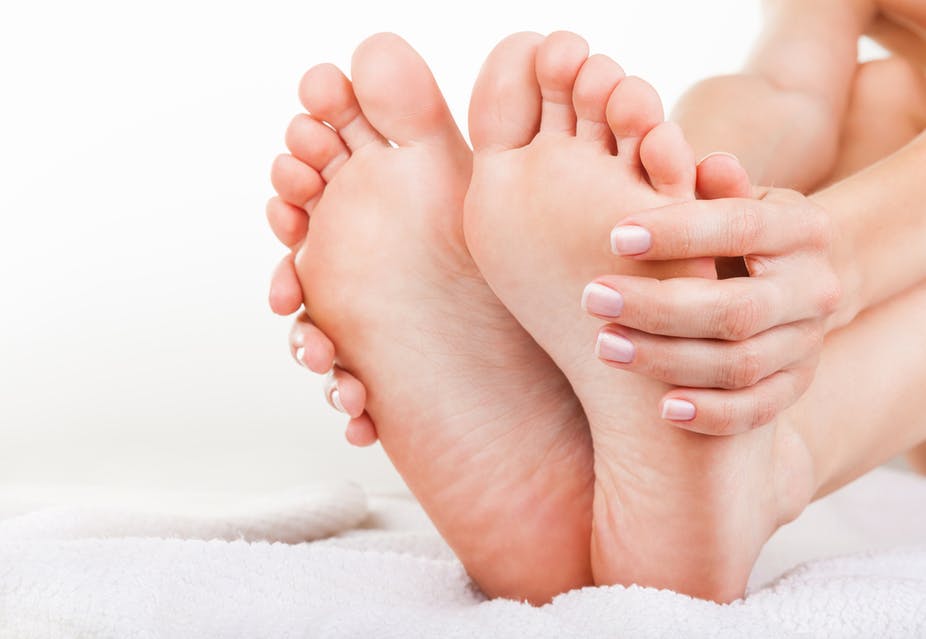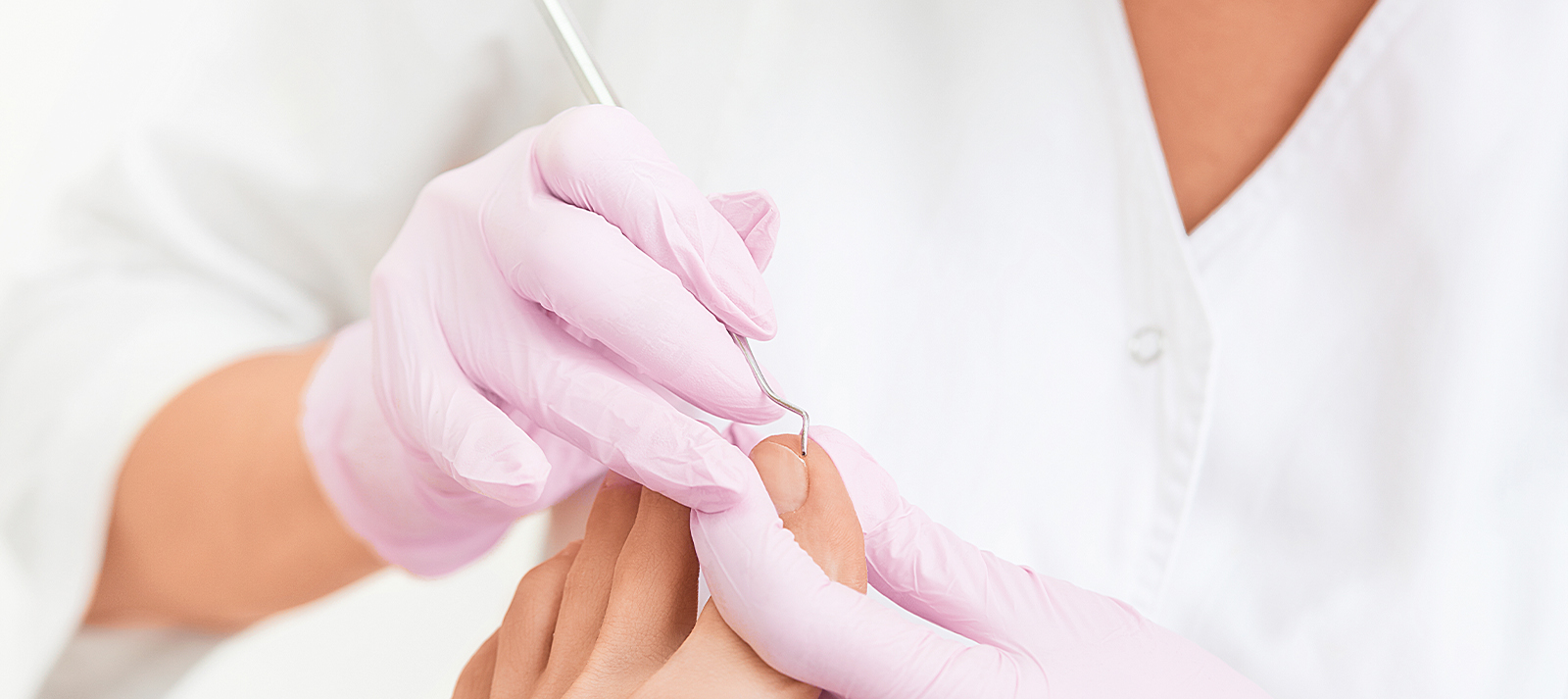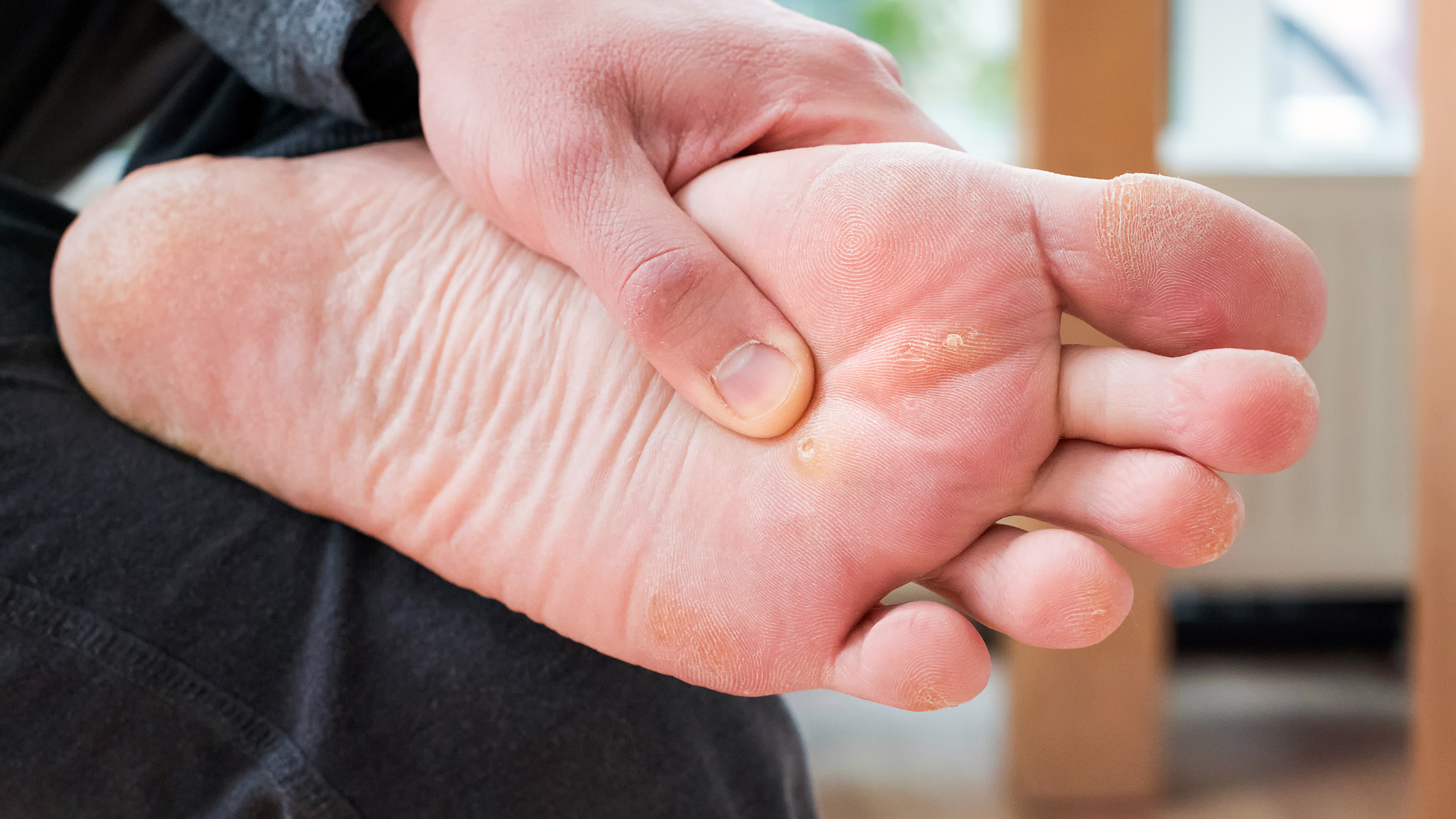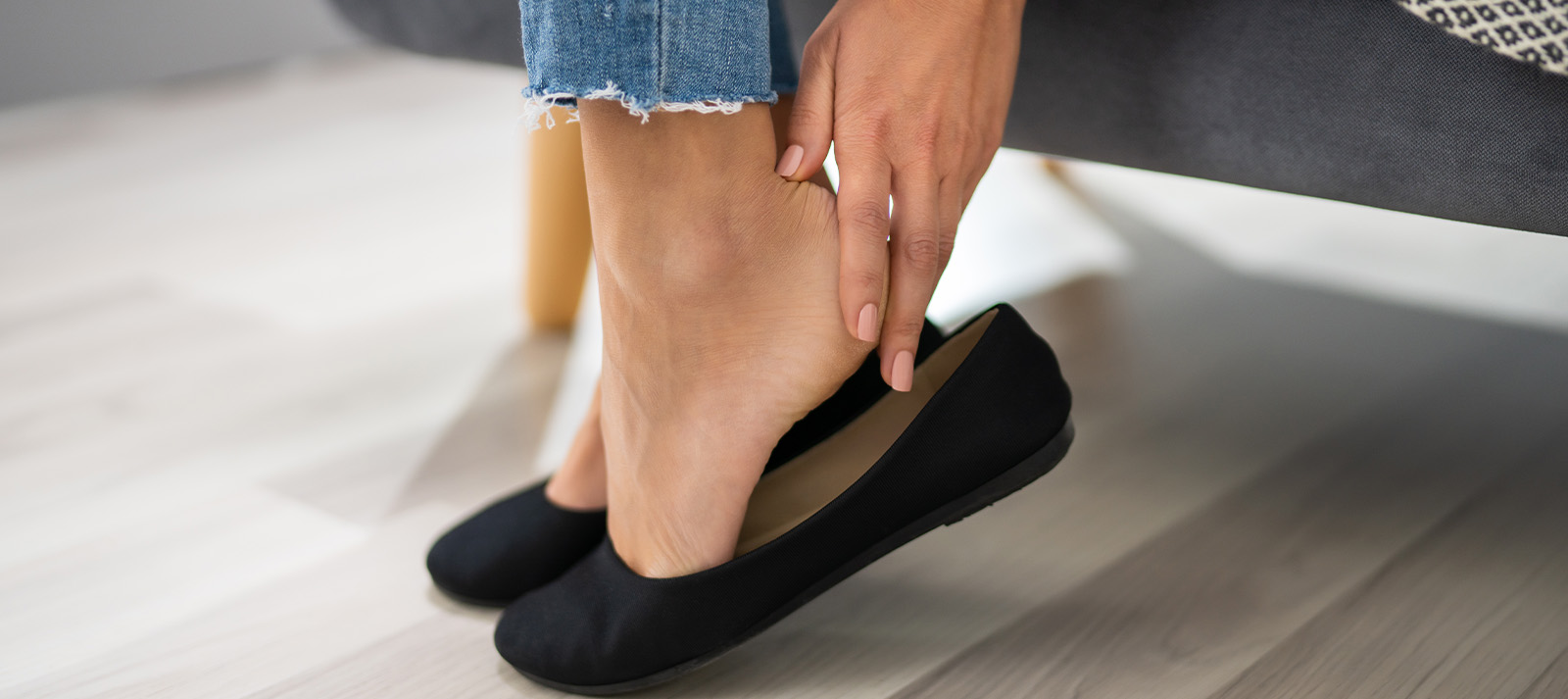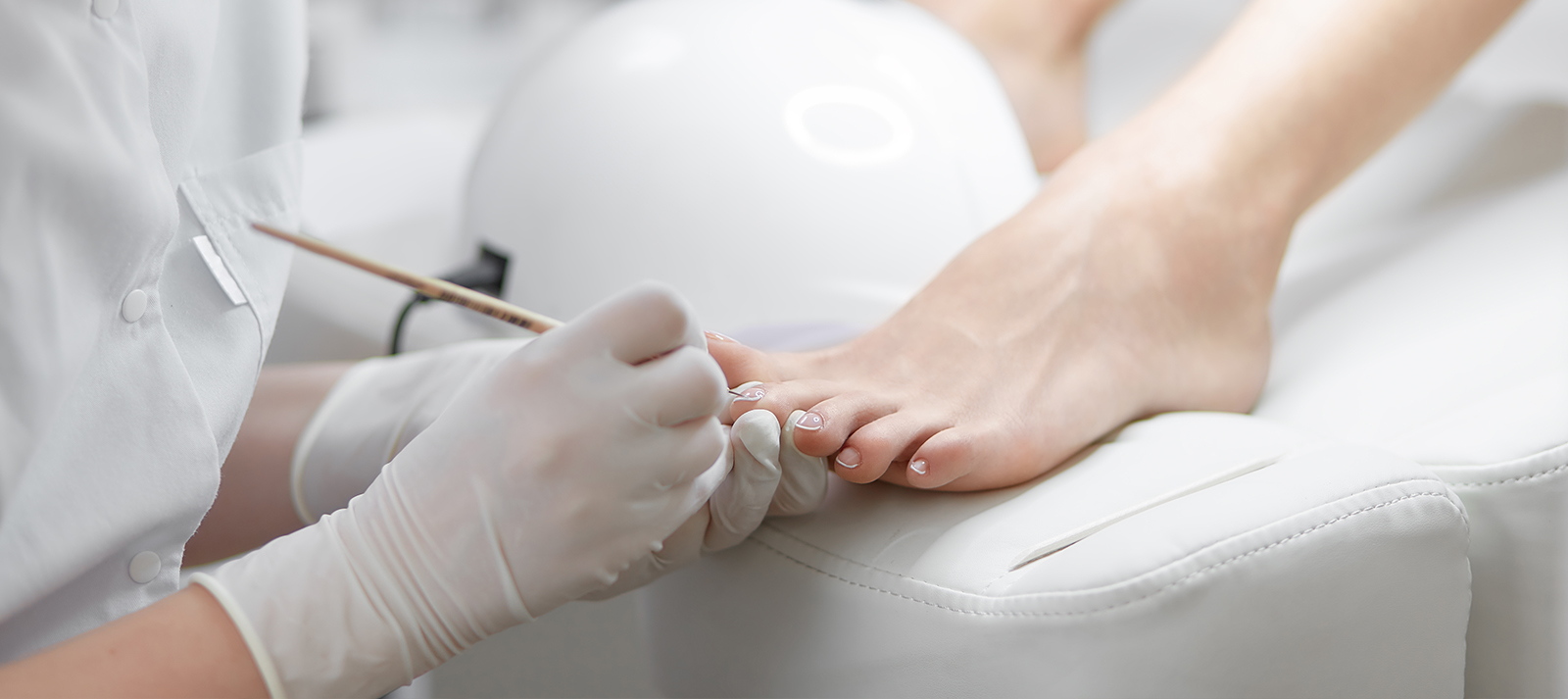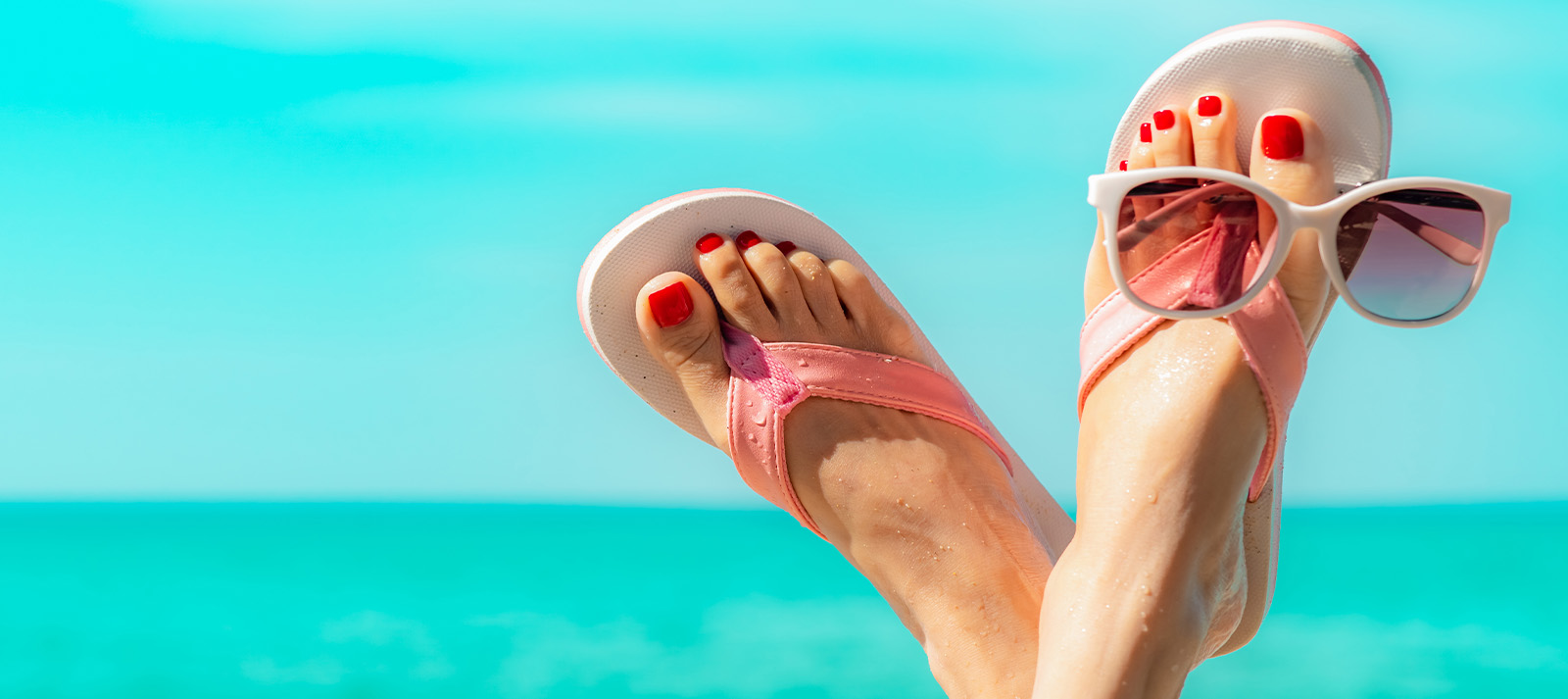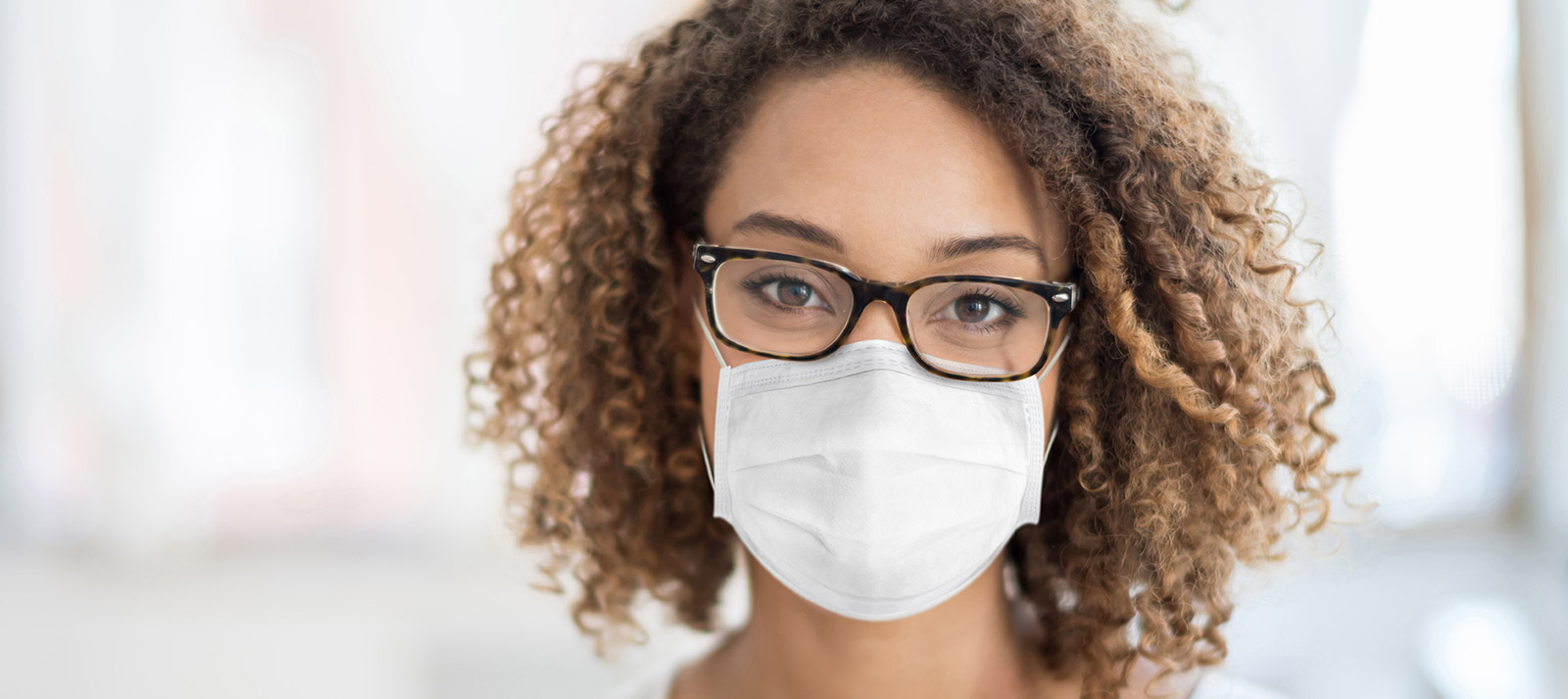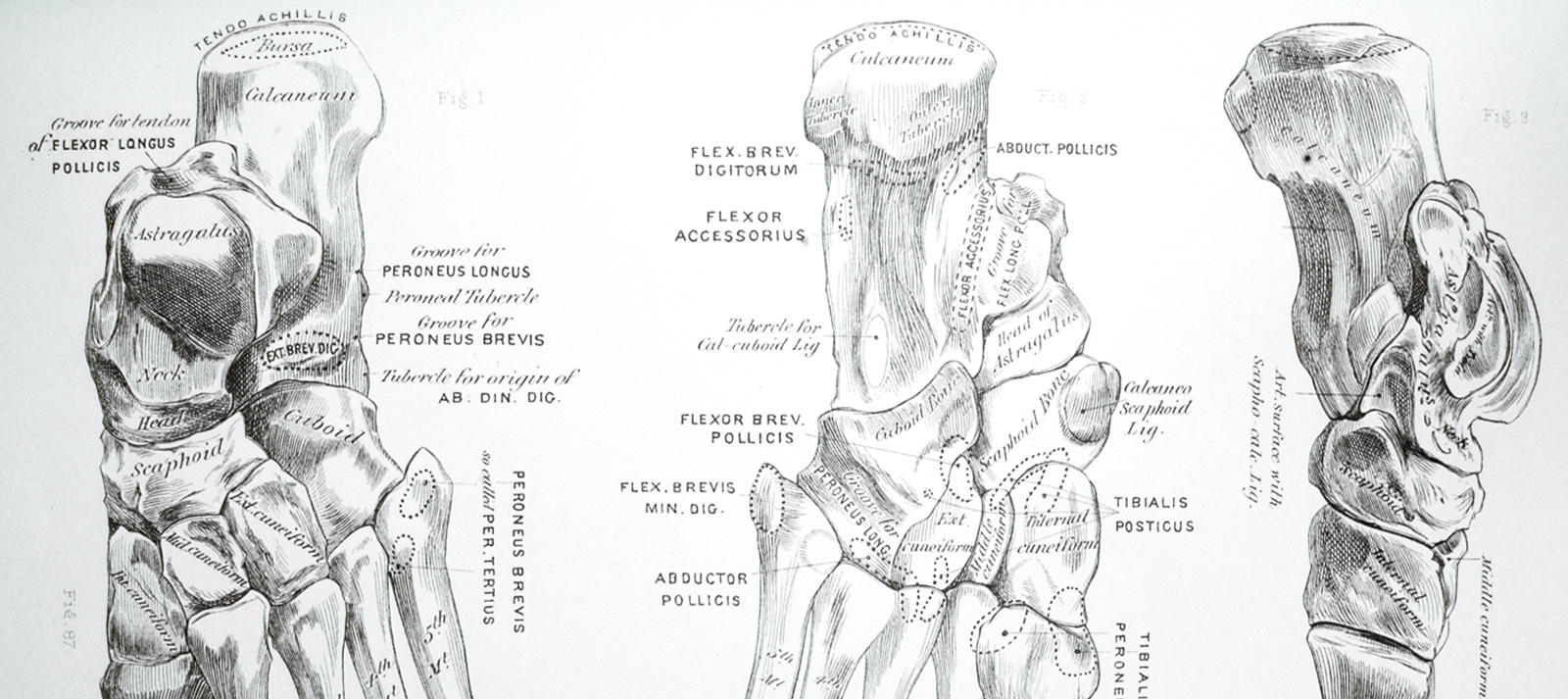Mending Dry Skin: Tips & Tricks
Mending Dry Skin: Tips & Tricks
Mending Dry Skin this Winter
We all deal with dry skin from time to time, especially during these chilly winter months, and while it’s a common ailment it’s also one that can cause discomfort. Often times we overlook dryness in the feet, but we owe it to ourselves to understand the cause and take measures to remedy & prevent it.
Causes for Dry Skin
Rough, cracked, and flaky skin on the feet can cause irritation and tenderness but why does this occur? Certain medical conditions like eczema and athlete’s foot can cause dryness and should be remedied using specialized prescribed or over-the-counter lotions. Cold weather, aging, and poor self-care like improper cleaning or footwear can also be common causes of dry skin. While dryness can be a nuisance, we recommend a few simple steps to repair the skin and minimize dryness from reoccurring.
The Balanced Solution
- Indulge in a foot soak: Need a self-care night? Using a foot soak with warm water and Epsom salt is not only a great way to unwind, but to soften rough skin as well. Once your skin is softened, use a pumice or foot scrub to gently remove dead skin cells from the soles of your feet. Make sure to heal any cuts or cracks before attempting to exfoliate.
- Moisturize: Once you’ve exfoliated, massage a rich, preferably oil-based moisturizer into your feet. Try applying foot lotion or cream before bed and wear a cozy pair of socks to lock in moisture and ensure that your feet stay soft and smooth.
- Protect your feet: Your feet need to breathe! When overworn, constricting footwear can quickly lead to dryness. Try to wear comfortable shoes that are made of breathable materials like leather, mesh, or canvas.
- Stay hydrated: If we’re dehydrated, chances are our skin is too! Be sure to drink plenty of water throughout the day to ensure proper hydration in the skin and to prevent chronic dryness in the future.
Once you’ve taken steps to heal your feet, be sure to routinely care for them to prevent dryness from returning. Some preventative measures include wearing socks regularly to protect your feet, avoiding hot water that can strip your skin of natural oils, and using foot care products. If you’re unsure where to find quality foot care products, take a look at some of the premium products that we have to offer in our shop.
It may take some consistency and effort, but following these steps will help get your feet feeling and looking their best. If dry or cracked skin becomes a repeated issue, even after self-care and prevention, don’t hesitate to give us a call or schedule an appointment.
Summer Foot Care on Vacation
Summer Foot Care on Vacation
Summer is just around the corner, and that might mean you’re getting ready for your next vacation to the beach or another bucket-list destination. Many vacationers neglect to properly take care of their feet. Don’t let pain and discomfort get in the way of enjoying your sunny vacation.
Here is a list of tips for keeping your feet happy when traveling:
- Choose the right shoes and bring multiple pairs
When planning your vacation, understand the types of activities you’ll be doing. Will you be walking a lot? What kind of terrain will you be on? Consider these questions as you pack. It’s also important to have multiple pairs to rotate. You may be trying to pack lightly, but having a second or third pair on hand will ensure you always have a fresh pair ready to go.
- Keep blisters away
Everyone knows the feeling of an emerging “hot spot” on our feet when we don’t have proper socks or footwear on. Don’t let something preventable like a blister ruin your trip. On top of wearing clean and quality socks and shoes, consider using a blister prevention cream or tape before spending long periods of time on your feet. There are many affordable and effective travel-size products available, such as Body Glide or RockTape.
- Don’t forget sunscreen
In addition to preventing blisters from chafing, sunburn can be another source of serious discomfort. If you’re wearing sandals or open-toed shoes when the sun is out, be sure to apply sunscreen to the exposed parts of your feet and toes. It’s easy to forget to apply protection to these areas, yet your feet are one of the more vulnerable places for sunburn when exposed.
- Keep the blood flowing
If you have a long plane ride or drive to your destination, compression socks are one good way to promote good blood flow while being sedentary. Your feet and lower legs will thank you if you break up long periods of sitting with short walks, which is another way to keep a healthy blood flow and prevent discomfort. It’s also recommended to avoid crossing your legs while sitting.
The importance of happy feet can be overlooked when planning for your summer vacation. You deserve a fun and relaxing vacation, so be sure to take these easy steps to prevent pain and discomfort while traveling. If you return home from vacation with skin or nail issues around your feet, learn more about how our team of professionals can get you the relief you need.
Ingrown Toenails: How to Avoid Them and How to Treat Them
Ingrown Toenails: How to Avoid Them and How to Treat Them
One of the most common calls we receive at Balance Foot & Ankle has to do with an issue that can be minimized by slightly modifying the way you maintain your feet. That issue is the development of ingrown toenails. Today we’ll discuss self-care for ingrown toenails, how to spot them and when it’s time to see your doctor.
Ingrown Toenails: How Can I Avoid Them?
Practicing proper self-care for your toenails can prevent ingrown toenails and infections:
- Avoid trimming the nails too short
- Trim nails straight across rather than at an angle
- Utilize sanitary and sharp clippers and tools
- Wear shoes that fit properly
I Think I Have an Ingrown Toenail: Now What?
If you are experiencing the following symptoms you may be developing an ingrown toenail:
- Pain
- Swelling
- Redness
- A change in your skin pigmentation along the nail border
If you notice any of these changes, the most important first step is to avoid the temptation to remove the ingrown toenail on your own. This will help you to mitigate a worsening of symptoms or an infection. Instead, try soaking your feet in a warm Epsom salt soak for 15-20 minutes twice per day, applying a topical antibiotic ointment (covered by a Band-Aid), and be sure to call your doctor to schedule an appointment if necessary.
When Should I See a Doctor?
There may also be signs of pus, warmth or red streaking along the toe which may indicate an infection. Should home care fail to alleviate the symptoms or should symptoms worsen, you should schedule an appointment to be seen in the office at which time your doctor will assist in alleviating the symptoms, managing the infection and will discuss an in-office procedure if necessary.
As always, we are here to be sure you are well cared for!
Callus 101: Causes, Prevention and Treatment
Callus 101: Causes, Prevention and Treatment
Foot calluses, or rough patches of skin found on the ball, heels or small toes, is a normal occurrence for most people. Caused by compression and friction, foot calluses are your body’s way of protecting the skin underneath from irritation and pressure.
Though calluses are a normal occurrence for most people, some patients are more likely to develop calluses than others. If you walk without socks, wear shoes that are too narrow for your feet or you already have a medical condition that changes the normal alignment of the bones in your feet, you’re more likely to develop calluses on your feet.
How do I prevent calluses?
Foot calluses can be prevented by wearing proper socks and shoes, including proper fitting footwear both width and lengthwise. Ensuring that worn shoes are repaired and replaced regularly can give your skin some protection from the shock of walking on hard surfaces.
How do I treat calluses?
There are numerous home remedies to reduce the appearance of calluses, though the majority of calluses can be resolved with time off of your feet. You should refrain from using sharp objects to remove or reduce calluses, as this could lead to infection.
If you’re looking to reduce the calluses on your feet, try these home remedies:
- Epsom Salts: Soaking your feet in a handful of Epsom salts in a bath or basin of warm water for ten minutes can greatly soften calluses, especially before manual exfoliation
- Padding: Adding moleskin patches or soft pads can help to protect the skin from rubbing against shoes or socks.
- Shoe inserts: Cushioned insole, arch support and heal counters can help to reduce friction on the skin, especially by moving pressure away from any problem areas.
If you are still experiencing pain from your calluses, be sure to schedule an appointment with one of our board-certified foot and ankle specialists. At Balance Foot & Ankle, we’re here to restore your balance and get you back on your feet.
This Common Sneaker Mistake Could Be Upping Your Risk for Foot Fungus
This Common Sneaker Mistake Could Be Upping Your Risk for Foot Fungus
Source: Well+Good
Once you get a foot fungus, it can be really hard to get rid of—especially if it spreads to your toenails. And while there are a handful of reasons why the condition can come about in the first place—from walking barefoot in public areas to sharing a yoga mat without sanitizing it first—there’s one common mistake podiatrists see all the time: Not letting your damp sneakers fully air-dry before wearing them again. Do this, and you’re essentially sticking your foot into a breeding ground for infection.
“Fungi and bacteria thrive in moist, dark environments like shoes,” says Jacqueline Sutera, DPM, a New York City-based podiatrist and Vionic Innovation Lab member. “This can cause stinky feet and athlete’s foot infection, or fungus of the skin and nails.”
Your sneakers can get extra sweaty in hot summer temps, making a foot fungus more likely. To prevent the issue, Dr. Sutera recommends alternating between a few pairs of shoes. “Wearing the same shoes all day, everyday, will encourage stinky feet and infections,” she says. By rotating your sneakers, you’re able to give them a chance to dry out between uses.
If you’re especially prone to foot fungus, she says you can even switch your sneakers out during the day to prevent moisture from building up. The best pairs to reach for on extra-sultry days include those with breathable mesh or canvas uppers—bonus points if you pair them with moisture-wicking Merino wool socks.
Aside from having extra pairs of shoes on hand, you can also stock up on some of Dr. Sutera’s favorite foot fungus-fighting products. “Some great options are anti-fungal shoe deodorants, foot sprays, powders, tea tree oil foot soaks, and antiperspirants to help keep your feet and shoes fresh,” she says. “There’s even a very effective UV light machine that kills the fungus growing in shoes that can be used in between uses.” So there you have it—who knew that our kicks need rest days, too?
Please read the full article here
Why A Medical Pedicure Is The Key To Healthy, Happy Feet This Sandal Season
Why A Medical Pedicure Is The Key To Healthy, Happy Feet This Sandal Season
Source: Vogue
A few weeks ago, I arrived at a close friend’s apartment with the unthinkable: freshly tended-to feet. “How?” she asked—or, really, begged—as she curled up her own toes, which still bore the traces of the polish from her last pre-quarantine pedicure. Much to her surprise, I hadn’t snuck into my neighborhood salon prematurely but rather paid a visit to Medi Pedi, the midtown Manhattan destination for medical-grade pedicures.
“We do not pamper the feet—we just treat them,” owner Marcela Correa warned me as I leaned back in a raised chair in her ground-floor clinic, which evoked a sterile doctor’s office more than a plush spa. Of course, any sandal season calls for some TLC, but after months of leaving our feet to their own devices, who couldn’t benefit from a deep clean? Performed by technicians trained to spot the difference between a callus and psoriasis, say, every session begins with a once-over of the feet to assess their condition.
In my case, that translated to a custom treatment, executed with laser-sharp focus, that included a hand-held drill to smooth my nails’ surface, a hydrating oil to return the beds to a healthy hue, and a file to gently mend my cracked heels. Thirty (painless!) minutes and a dollop of moisturizer later, my feet looked like those of a newborn—especially because they were completely naked. (Appointments are polish free—lacquer can dry out the nail beds and lead to discoloration and brittleness, Correa noted.) But as I walked down Park Avenue with my bare toes—now so shiny that they almost sparkled—staring up at me, I can’t say I missed the color. In fact, with phalanges this naturally glowing, there was no longer a need for even a barely-there coat of nude, let alone my go-to deep crimson. “I want people to feel proud of their feet,” Correa said, plain and simple, just before I left. I never thought I’d say it, but: Mission accomplished.
Are Your Feet Beach Ready?
Are Your Feet Beach Ready?
Source: The Conversation
The summer sun sees us strip off. And from a podiatrist’s perspective, that’s means the arrival of new footwear, as people ditch boots and trainers for sandals and flip flops. For the past several months, our feet have been hidden away, and in some cases, neglected, but now, most of us want our feet looking and feeling good for summer.
So as an expert in feet, here are my top tips for things you can do to get your feet ready for the summer.
General foot care
When it comes to toe nails, cut straight across – avoid cutting down the sides of the nails as you run the risk of an ingrowing toe nail.
During the winter months our feet can become dry, cracked and form hard skin called callus. A useful approach to combat this is to soak your feet in warm water for about ten minutes and then use a pumice stone or foot file to lightly take the dry skin off. This should be followed by a moisturizer cream applied daily. For those who have particularly dry and callus feet, a cream with the ingredient urea (which can hydrate and regenerate the skin, soothe irritations and soften the top layer of the skin) can be very useful.
If your feet are very dry, you may wish to put on a pair of socks after the application of the cream to increase absorbency. And if you do suffer with callus that is not responding to self-care, or you have corns – concentrated hard areas of skin that occur on the joints of the toes or on the bottom of your forefoot – then you will need to see a registered podiatrist.
If your feet are dry, with a scaly-type of rash or the skin is itchy you may have Athlete’s foot which is a fungal infection. Likewise, if you have thickened and discolored nails that crumble on cutting, it may also be due to a fungal infection known as onychomycosis. While it is tempting to cover them up with nail varnish don’t – this will only make the problem worse. Again a registered podiatrist can help and there are a number of over-the-counter fungal topical products that a pharmacist can advise you about.
Summer footwear
The less-is-more approach to footwear in the summer has many of us donning sandals and flip flops, the latter of which in particular offers minimal protection and support to the foot and lower limb. Changes to footwear styles and an increase in activity – summer walks in parks and along the beach, for example – can increase the chance of injury to the foot. In the case of flip flops, the separator between the first and second toes can cause all of the toes to claw (curl) during “toe-off” as we walk to keep the flip flop on, since there is little support across the top of the foot. This can increase the stress and forces within the forefoot area and for some individuals, the separator between the first and second toes can cause irritation of the skin resulting in blistering during the early stages of wear.
We advise that individuals stage the use of less supportive footwear such as flip flops and sandals with more supportive footwear – trainers, lace ups.
In addition, where possible, for those who wear sandals, it is advised that a style which incorporates a strap mechanism across the top of the foot be worn. By adopting a staged approach to summer footwear, it can allow the feet to adapt and minimize the risk of problems that could occur within your foot, ankle and lower limb – this can include forefoot pain, heel pain (tendinitis), fractures, strains and sprains.
It is important to note that if you have poor circulation, diabetes and/or a loss of sensation of your feet (neuropathy) you will need to be extra cautious. Remember, everyone needs to protect and care for their feet – looks are important, but pain-free walking in the summer sun is even more essential.
A Note of Reassurance
A Note of Reassurance
The health, safety and well-being of our patients, visitors, employees, and our community is top priority.
As a medical facility, we already adhere to strict practices and policies of cleaning and sanitation daily. Given the current situation, we are taking additional steps to be extra vigilant and keep our office safe for our patients. These additional measures include increasing the frequency of cleaning all surfaces and areas with antibacterial and antimicrobial cleaning products recommended by the CDC. We have added a medical grade HEPA/HEGA air filter purification unit in our office which filters greater than 95% of all dust, spores, mold, bacteria, viruses, chemicals, and gases larger than 0.100 microns. Scientists say that the size of the Coronavirus is 0.125 microns. Therefore, the air filter purification unit is designed to capture airborne particles of this size. Additionally, masks and alcohol-based hand sanitizer is readily available. Thank you for your understanding and cooperation.
Stay Safe & Healthy –
Dr. Jennifer L. Prezioso, DPM, FACFAS
BarkingDogShoes.com Guest Column: The Podiatrist is in! Meet Dr. Jennifer Prezioso
BarkingDogShoes.com Guest Column: The Podiatrist is in! Meet Dr. Jennifer Prezioso
Have you ever found yourself, at the end of an evening, thinking of nothing other than getting home and switching out your gorgeous-but-painful pair of shoes in exchange for an old pair of slippers that has seen better days but never lets you down? If yes, then pull up a chair, have a seat, and welcome home. My name is Dr. Jennifer Prezioso, and I am a shoe lover (and hater) just like you. But, as a Podiatric Surgeon, board certified by the American Board of Foot and Ankle Surgery, I am also a dedicated member of the world of Foot and Ankle specialists striving to help people understand their individual foot type and how to make sure they are making healthy shoe choices. So I not only empathize with those who adore shoes but face footwear challenges, I also advocate for them every day. I recently had the opportunity to write a guest column for BarkingDogShows.com on this very topic. If you would like to learn more, read the full article here.
Source: BarkingDogShoes.com
Balance Now Offers Video Visits!
Balance Now Offers Video Visits!
While we love to see you in our office, we realize it’s not always convenient to do so. Video visits allow you to receive the same quality care as you do in the clinic, without taking time off work or finding a sitter to see us.
It’s easy to get started. Next time you’re in the office or need to schedule an appointment, ask for a video visit. Next, look out for an email or text to confirm your information in our telemedicine platform, called Chiron Health. On the day of your visit, simply log in 15 minutes early to see your doctor over video. It’s that easy.
Video Visits are great for:
● Follow-up visits
● Medication questions
● Lab & test results
● General questions and more
Skip the waiting room, request a video visit for your next appointment!

